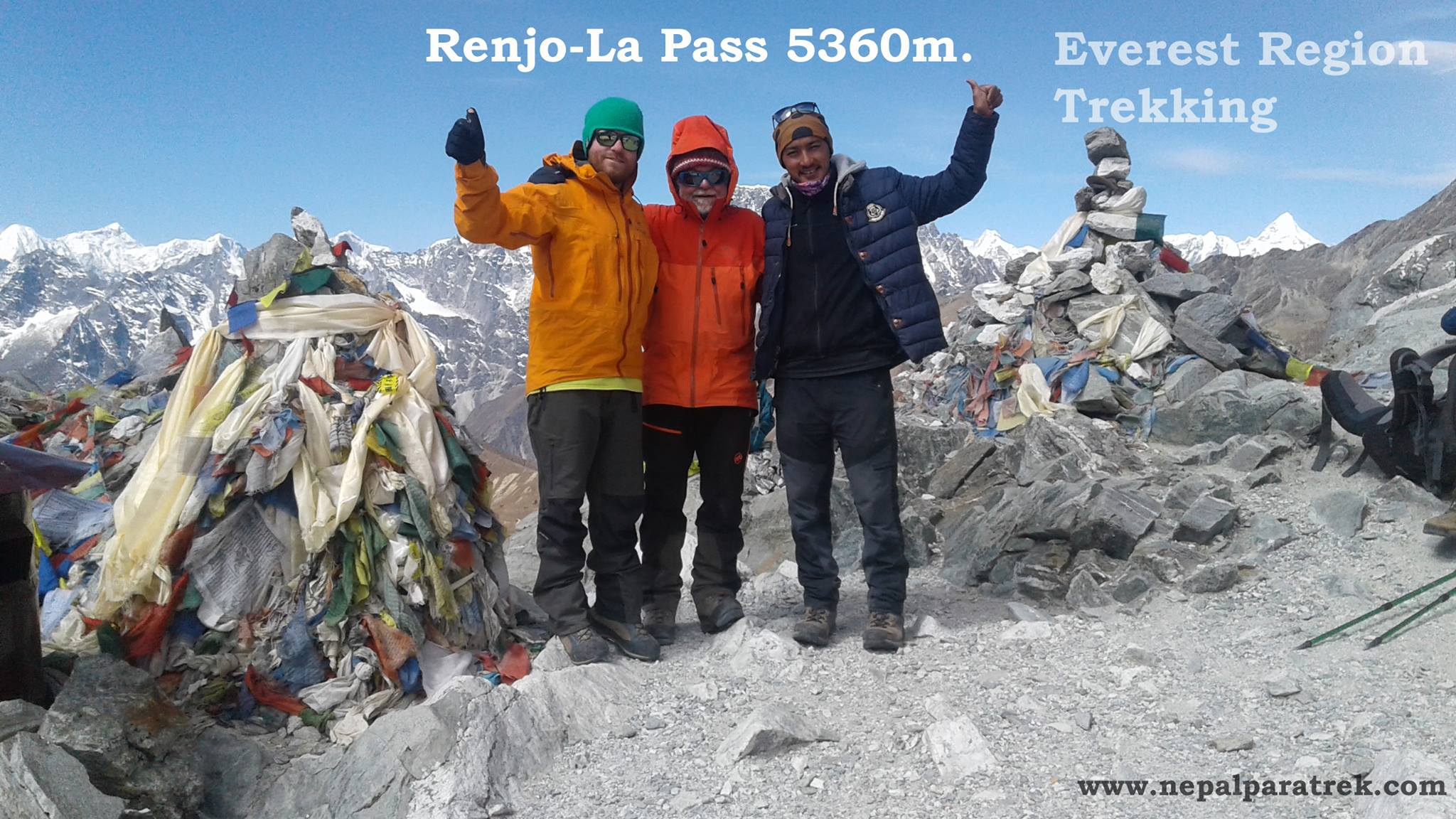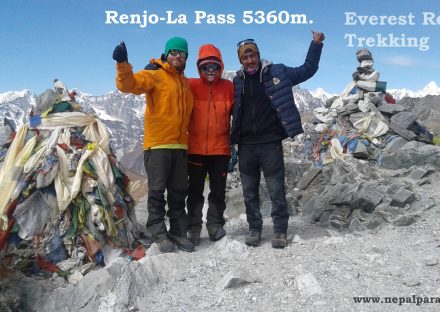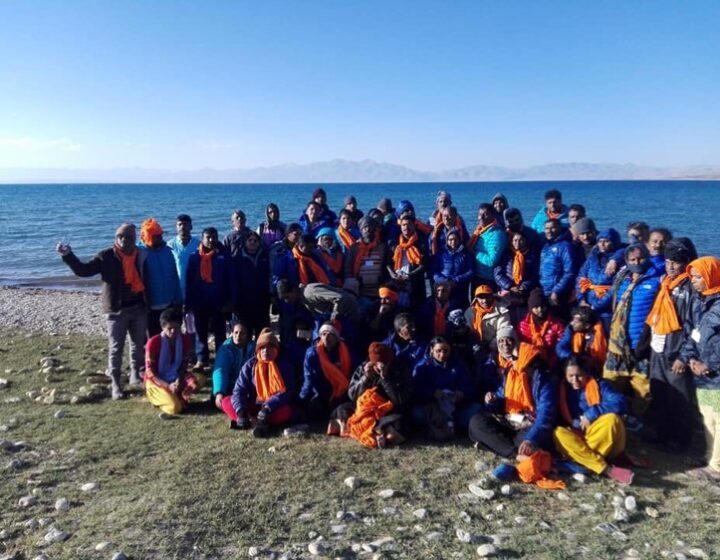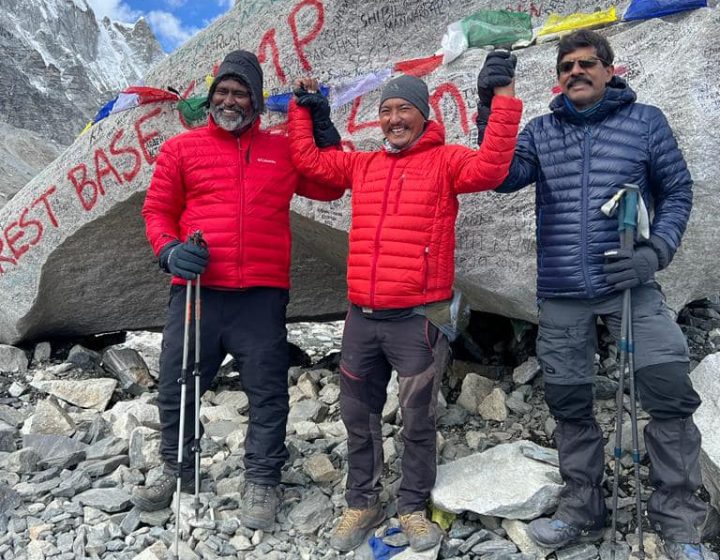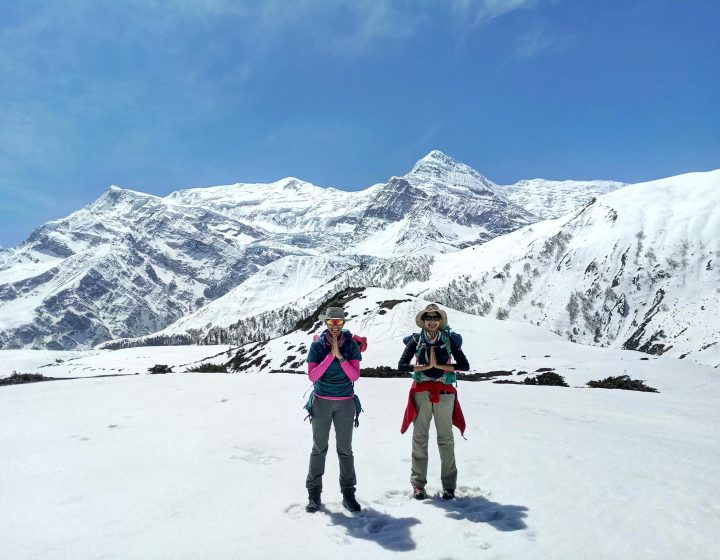Tour overview
One of the most difficult treks in the Everest region is the Everest 3 High Pass Trek. If you want to go on a more thrilling and adventurous journey, Everest 3 High Pass Trekking is the one for you. Everest Three (3) High Pass Trekking will take you on a less trafficked path to Everest Base Camp, where you will enjoy a spectacular view of mountains such as Mount Thamserku, Mount Lhotse, Mount Everest, Mount Ama Dablam, Mount Nuptse, and many more.
A once-in-a-lifetime adventure trip to the Himalayas is the Three Pass Trek. You will enjoy and can visit seven breathtaking locations on this adventure journey that are over 5,000 meters above sea level. Along with the three summits of Gokyo Ri (5483 m), Kalapathar (5545 m), and Chukung Ri, the three passes are Renjo La Pass (5388 m), Cho La Pass (5380 m), and Kongma La Pass (5535 m) (5550 m).
Spring is one of the most beautiful periods of the year, with lovely flowers blooming and new leaves sprouting. The entire surroundings turns green, providing you with fresh air and pleasing your eyes.
Nepal seems much more gorgeous in the spring. During the Spring season, the stunning mountain vistas will be clearer. The Everest Region’s temperature and meteorological conditions are also ideal.
In late May, you can expect some light rain. But don’t worry, the view you’ll get to see the next morning is spectacular.
It is a walk with unsurpassed alpine splendor and, without a doubt, the world’s grandest mountain vistas. Highlights of the voyage include the Sherpa settlement of Khumjung, the beautiful Gokyo lake, the breathtaking scenery from all of these routes, and the stop at Everest base camp. The excellent thing about this three-pass walk is that, although crossing three passes, little technical climbing is required, and anyone with good fitness and previous trekking experience may finish the trek successfully.
If you trek during the monsoon season, the difficulty level of the walk rises. During the monsoon season, heavy rains make the path muddy and hazardous. You must proceed with caution. As a result, if you are a newbie, you should avoid trekking during the Monsoon season. If you are a seasoned trekker, you will love every challenge in whatever season.
Similarly, throughout the winter, the Everest region is completely encased in snow. This will make walking and passing through the paths tough.
Itinerary
A representative from our company will greet you outside the Terminal Hall. Please keep an eye out for our Treks and Expeditions play card. Transfer to the hotel, meet your trekking guide, and go through the itinerary. Afternoon stroll through Thamel's colorful tourist market.
(Check all trekking gears/equipments)
After breakfast, visit the world heritage sites of Pashupatinath Temple, the holiest Hindu Temple on the banks of the sacred Bagmati River, and Bodhanath Stupa, the world's largest Buddhist Stupa architecture! Patan Durbar Square is the oldest city in the Kathmandu Valley and is also known as Lalitpur-the city of beautiful arts. The tour includes the Durbar Square, the Krishna temple, the Kumbheswore temple, the Golden Temple, and many other attractions. Swayambhunath Stupa-the 2000-year-old renowned stupa atop the hill known as the Monkey Temple. Your day tour concludes at Kathmandu Durbar Square, which features the living goddess Kumari Temple, Nautale Durbar, the Kaal Bhairav, the Swet Bhairav, freak Street, and other attractions.
Transfer to a domestic airport for a 35-minute flight to Lukla (2780m/9175ft), the gateway to Everest Base Camp. Culminate dramatic landing on a hillside Lukla, then downhill to lovely Sherpa village Choplung. The trail continues along the Dudh Koshi valley's edge before ascending to Ghat ((2530m /8350ft)). The trail gently climbs again for roughly an hour to the final destination of Phakding.
The trek takes you through a lovely pine forest and along the Dudh Koshi River, through many suspension bridges and passing through the Sherpa settlements of Benkar, Chimoa, Monjo, and Jorsole. National Park permission checkpoint with a calm view of Mt. Thamserku (6618 m) The trail continues along the Dudh Koshi riverbed till it reaches the confluence of the Bhote Koshi and Dudh Koshi rivers. The trail gradually ascends before crossing the high Tenzing-Hilary suspension bridge. On the way, there was an astounding view of Mt. Everest right up next to the Nuptse-Lhotse range. After around 3 hours of ascending through the beautiful pine forest, you will arrive at Namche Bazar, a prosperous trading and administrative village.
(Visit Sherpa museum and Hike Everest View Point).
The trek's acclimatization day has arrived. Acute Mountain Sickness (AMS) and health experts advise staying an extra night. Instead of being lethargic, be active and travelling. Namche Bazar offers ATMs, cyber cafés, mouthwatering eateries, a bakery, and a vibrant market every Friday evening and Saturday morning. A day excursion begins with a visit to the Sagarmatha (Everest) National Park visitor center on a hillock, where we may see a variety of items relating to the first Everest climbers, Sherpa culture, and learn about the many vegetation and animal life of the Everest region. Then take an enjoyable acclimatization side trip to Khumjung, a big traditional Sherpa settlement with views of Thamserku, Khaantaiga, Ama Dablam, Mt. Everest, and many more.
The trail is mostly level and offers spectacular views of Mt. Everest, Nuptse, Lhotse, and Ama Dablam, as well as close-up views of Thamserku and Khangtaiga. The walk continues through wild life, with sightings of musk deer (a herd of Himalayan Thar) and colorful pheasants (Danphe, National bird) The trail descends to the Dudh Koshi River, where there are a few lodges and a series of magnificent water-powered prayer wheels. Cross the suspension bridge over the Dudh Koshi River, then ascend steeply through pine and juniper woodland for almost 2 hours to reach Tenboche. The famed Gomba (Tengboche Monastery) with Ama Dablam, Nuptse, Mt. Everest, and many more peaks in the distance. During the full moon in October/November, the colorful Mani Rimdu festival is held in the monastery courtyard, complete with masked dancing and Tibetan opera.
The path leads to Deboche, a little village with Chortens and Mani stone walls, as well as a nun monastery. Cross the Imja Khola suspension bridge (Imja Strasm) and gradually ascend to Pangboche with a panoramic view of Ama Dablam (most beautiful mountain in Everest region) The trail follows the Imja River upstream, gradually ascending toward Imja Valley. The trail is reasonably visible up to the confluence of the Lobuche river and begins in the late afternoon to Dingboche, the final Sherpa town with the lovely terraced fields
As we leave Dingboche, the trek through stone walled meadows and alpine environment is pleasant. As we hike to the top of Imja Valley, the sights are breathtaking. Walking across the valley, we can see Lhotse on our left and Ama Dablam on our right. After roughly 3 kilometers of walking, we arrive at Bibre, a yak herder's camp at 4570m. Straight ahead, beyond a terminal moraine wall, soars the popular trekking peak, Island Peak (Imja Tse, 6189m). With its step granite and snowy south face, the pyramidal Imja Tse looks amazing. The trail ahead is cut by freezing torrents. We arrived in Chhukung after a 30-minute stroll from Bibre. After lunch, we may trek to the rocky knoll of Chhukung Ri at 5546m, which gives spectacular views of Lhotse, Island Peak, Ama Dablam, Makalu, and several more, including Baruntse.
Hike to Chhukung – Ri and Exploration around Chhukung Valley.
A second rest day in Chhukung for improved acclimatization is strongly advised before attempting the pass. However, we are not expected to be idle. The views from Chhukung and the moraines higher up the valley towards Island Peak (6189 m) are spectacular. We seize this opportunity to go to the Island Peak base camp (4970 m) through the Lhotse glacier, crossing through the bloated water of Imja Lake. To the north, the enormous south face of Lhotse rises above, while to the south, Amphu Lapcha a (5845 m pass) and the massive fluted ice walls that border it dominate the horizon. The eastern face of Ama Dablam affords an interesting view of this magnificent summit to the southwest.
Today's hike takes us from Gorakshep to the moraine of the Khumbu Glacier. We pass a sign pointing to the Italian Pyramid along the way (scientific research centre). We can see the crest of Everest's north ridge, as well as Mt. Pumori, Mt. Mahalangur, Mt. Lingtern, Mt. Khumbutse, and Mt. Nuptse, a little further along the trail. We hike a short distance to ThangmaRiju, where we have a 360-degree panoramic view of snow-capped mountains. We get our first glimpse of Kala Patthar, a rocky knoll below Mt. Pumori, after a difficult climb and across the Changri Glacier. After arriving in Gorakshep, we are treated to a breathtaking view of the surrounding snow-capped peaks, including Mt. Everest. Breakfast, lunch, and dinner are available.
An early start takes us to Kalapatthar (also known as Black Rock), a well-known landmark that provides an incredible panoramic view of the surrounding huge peaks, including a close-up of Mt. Everest. We then return to Gorakshep and continue on to Dzongla, at the base of Cho-La Pass, where we spend the night. Breakfast, lunch, and dinner are all included.
We start our trek to Thangnak, which lead us to spectacular view of Mt Cholatse (6440m). The walk begins at Dzonglha and heads west. Today is the most difficult day of our journey as we make our way to Cho-La Pass (5420m). When we reach the valley's highest point, we begin our walk via Cho La Pass, taking in breathtaking views of Chola Lake and Mt.Amadablam. The ascent can be tough due to the rocky terrain and ice-covered rocks. We descended to Thangnak after reaching the top of the pass and continue our trek to Gokyo Ri
(Hike to Gokyo-Ri and exploration day around Gokyo Lake.)
We can ascend Gokyo Ri in the morning for a panoramic view of some of the world's highest peaks, including Mt. Cho Oyo, Gyachung Kang, Mt. Everest, Mt. Lhotse, Cholatse, Taweche, and Mt. Makalu in the east. This is without a doubt one of the highlights of the journey! Then we descend to Gokyo. Option two is a 5-hour hike to Gokyo's 5th lake, which takes us to the very base of Cho-Oyu, the world's 6th highest mountain, which borders Tibet. We will also enjoy spectacular views of Mt. Everest, Changtse, and the massive ice wall of Cho-Oyu from here.
We leave before dawn for our final high pass, following the trail at the end of Gokyo Lake, where we are once again rewarded with spectacular views of Taboche, Lhotse, Cholatse, and Mt. Everest, before crossing Renjo La Pass. This is also one of the more difficult stages of our trip, but once we reach the top, we will be rewarded with breathtaking views of Mt. Cho-Oyu and other high peaks. After a short break, we continue our walk to the frozen lakes below Renjo La Pass before descending to the little settlement of Lungdeng, which is near to Nangpa-La Pass.
(At late afternoon visit Thame monastery)
Leaving Lungdeng, we take a steadily ascending trail to Thame Village, which has its own hydropower generator. We pass through various Khumbu villages as well as pine and rhododendron trees on the way to Namche Bazaar. Our journey continues as we return to Monjo, near the Sagarmatha National Park, where we will spend the night. Breakfast, lunch, and dinner are available.
In the early morning we will take 6 hours of walk to Namche Bazar.
(Farewell dinner together)
After our incredible mountain journey, we fly back to Kathmandu this morning. After landing in Kathmandu, we can either rest or do some last-minute shopping in Thamel. Tonight is a night of celebration following the completion of this most remarkable adventure, which will leave you with memories to last a lifetime! Breakfast, lunch, and dinner are all included.
Today you can enjoy the city beauty of Kathmandu, you can explore the cultural site and local market to do traditional shopping.
Your voyage comes to an end today, and you take several photographs of some of the world's tallest peaks with you. You will have made friends along the way and will be able to share recollections of this wonderful Everest High Three Pass Trek, as well as the smiling faces of individuals who live in these remote wilderness places. Staff from Sherpa Expedition & Trekking will transport you to the airport for your last departure.

